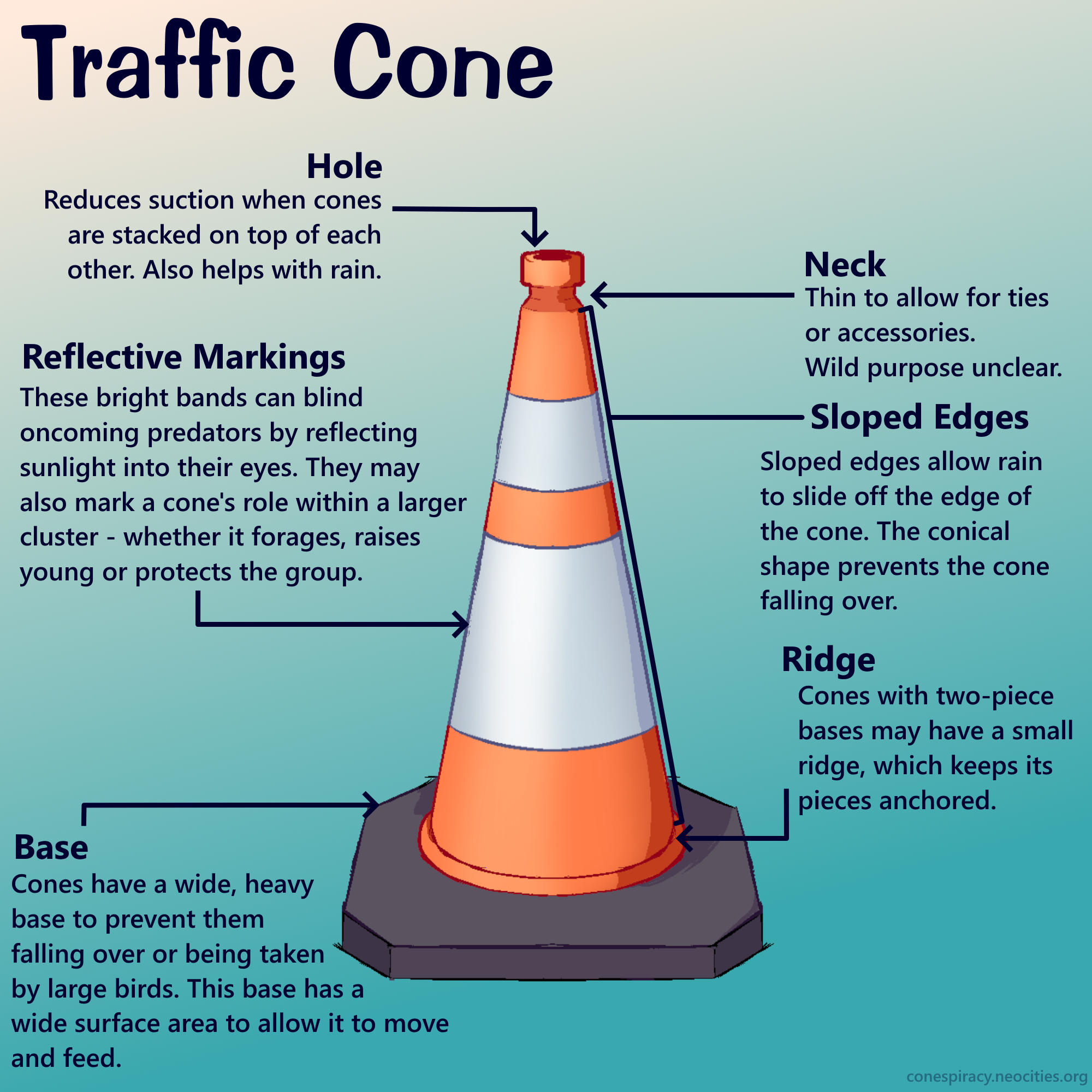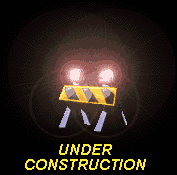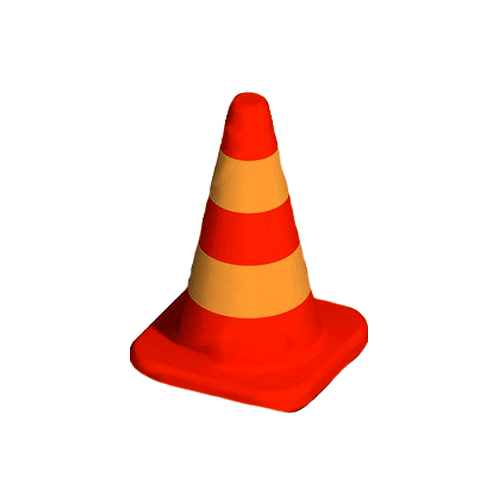welcome to conespiracy!
About Cones
Would strongly recommend this video by V. Livingstone and Canterbury TV for a good summary of the basics.
The cone (subfamily Columnidae) is a herbivorous creature generally endemic to densely populated areas of North America. They are occasionally referred to as pylons, or witch's hats if you're Australian.
The collective noun for a group of cones is:
- a cluster or stack of cones
- an array of pylons
- a coven of witch's hats
Clusters vary wildly in size, from small groups of three or four to vast packs of over 100.
Taxonomy
Disclaimer: I am an amateur. The following is technically speculative, but it's the best I could do.
'Cones' typically refer to any member of the family Columnidae, which is the dominant family within the order Limides (which contains all "traffic control" creatures).
The most recognisable cone is Novoconus luteus, also known as the modern orange cone - though it is easy to confuse with members of the Varioconus genus.
Traffic cone taxonomy is as follows:
- Order: Limides
- (contains all "traffic control" creatures, and maybe more)
- Family: Columnidae
- (contains any creature that "does what a cone does", so to speak)
- Genera: typically Varioconus or Novoconus
- (Novoconus contains the widespread modern cones of today, whereas varioconus is typically reserved for cones native to one area)
- Species: varies
- (The modern orange cone is Novoconus luteus.)
Traffic bollards (genus Pseudoconus) are also classified under Columnidae, and are often referred to colloquially as "cones" despite their non-conical nature.
Etymology
...They're cone-shaped. Conical, if you will. Hence 'cone'. C'mon, don't play dumb with me.
Limides derives from the term for "boundary".
Columnidae denotes a "pillar" or "landmark", which is their traditional quasi-societal role.
Novoconus is from nova ("new") and.. conus ("cone").
Cone Biology
As its name suggests, cones possess a conical shape: the tall, narrow tip allows individuals to stick out in dense grass and bushes. Their wide, heavy base strongly reduces the risk of being overturned - much like the tortoise, it is incredibly difficult for a cone to flip itself back upright when knocked over. In modern times, the shape of the cone has allowed them to equip human-designed accessories, as ring-shaped structures can slip comfortably and easily onto them.

The most striking aspect of the cone is its vivid colouration, typically orange. This serves several purposes - the base hue of the cone allows extensive visibility upward of several kilometres. Whilst one would expect this to attract predators, the ease in which a cone can reflect light can deter attackers by temporarily blinding them.
In addition to protection, the distinct separate colours of cone species can communicate information about the surrounding environment: for example, blue cones live in areas with overhead hazards, and orange cones steer clear of their territory as they cannot necessarily handle the conditions. This is, however, a phenomenon only observed within large groups - small clusters will happily room together, however they generally avoid cross-subspecies breeding to ensure their hues remain vivid and distinguishable.
Cones vary in height dependent on their subspecies. The standard UK-native cone stands at a minimum of 75cm (2.46ft) tall with a 38cm (1.25ft) diameter, however they typically do not exceed 95cm (~3 ft) in height, and rarely weigh more than 7kg (16.5lbs). Exceptions are made for dwarf and giant cone species.
Early ancestors of cones had a soft, rubbery exterior. Cones of the modern era have evolved a more plastic-like outer shell, adapted to protect their interiors from modern plights.
Cone Markings
The majority of cone subspecies have one or more reflective stripes, or bands, across their body. These indicate the cone's individual role within its cluster.
Cones with no bands are generic members. Typically, these cones will forage or otherwise clear the cluster's territory of debris.
Single-banded cones are protectors and guardians of the cluster. They typically focus on the raising of young, warding off predators from the area when necessary.
Double-banded cones are leaders: there are typically very few of these in a wild cluster. These cones decide where to go and what to do. Very rarely, but mostly in domesticated clusters, small formed entirely of double-banded cones will form, creating a scouting group. These are not often found in rural areas.
Habitat and Distribution
Though originally native to North America, modern times have introduced the now-thriving species to similar habitats across the majority of the world. Most cones favour open spaces in densely-populated areas within or close to human settlements. Cone microhabitats typically feature a dirt or gravel ground and access to sunlight, but with ample foliage and cover nearby, and a small source of water. (More on this later, on its own page.)
Behaviour and Ecology
Human and cone environments possess significant overlap, and yet very few have bothered to study the behaviours of wild cones. Wild and domestic cones vary slightly in habits. As such, the active period of the cone, whether diurnal, nocturnal, crepuscular or otherwise, is currently unknown.
Amongst the majority of the public, a general impression of inanimacy has arisen, likely a result of the relative idleness of the domestic cone. This is not the case. Where do you think they go, huh? If they were inanimate, don't you think they'd have been picked up by now? Have you ever seen someone collecting cones along the motorway? They move by themse
General behaviours
Cones remain stationary for a significant portion of their daily activities. This helps conserve energy, as most cones have a very small digestive system and often cannot process enough food for extended activity. This doubles as a predator deterrent, as oncoming attackers may mistake a cone for an inanimate, inedible human creation. (Like all of you do.)
Idleness is far more common in domestic cones than wild cones, as cities tend to lack nutrient sources and leave cones weak.
Grouping and social behaviours
Cones form groups henceforth referred to as clusters, which vary wildly in size - anywhere from a handful of cones to several hundred. Lone cones are not an uncommon sight, however this is typically a result of getting lost.
Cones within a cluster take on roles typically dictated by their markings, though tasks can be shared freely amongst each other according to their physical ability. Not all clusters have all markings, and many are monomarked, making markings a poor indicator of social role in such groupings.
When necessary, cones will stack on top of each other, done with the assistance of others. Frightened cones will stack to increase height in the face of predators, or to reduce the number of targets and thus the likelihood of the entire cluster being picked off.
Young cones may stack below their parents to enable easier feeding.
And, finally, cones.. presumably reproduce via stacking. Nobody is quite sure how this works, but sometimes there is a much smaller cone underneath a large one when you lift it up.
Diet and food
Cones are strictly herbivorous. They feed on small plants, namely common weeds and grasses, with fallen fruit serving as their primary nutrient source. Wild cones are sometimes found standing over plants they are not interested in eating, to ensure nobody else gets to it while they process what they've already eaten. Excess berries and nuts are shuffled back to the group's territory, where they are shared amongst the cluster.
To eat, cones position themselves directly over their food so that their base is covering as much as possible. They then... I don't know, I've never seen them open a mouth or anything.
Cone History
The modern cone was first openly recorded in 1938 by C. Scanlon, who observed the creatures in secret for several years before passing them off as an invention - due to their apparent inanimateness - in 1943.
They were quickly domesticated and brought worldwide for their valuable combination of visibility and tendency to remain idle.
A shipment of domesticated cones was brought to the UK in 1958 for use in marking a newly built motorway, however poor management by the handlers resulted in several cones escaping, reverting to a wild state and breeding. The island now has an impressive population, sometimes considered invasive in urban regions.
Starting in the 1980s, it became a humorous tradition by Scottish locals to place a cone upon the head of the Statue of the First Duke of Wellington, located outside what is now the Gallery of Modern Art.

